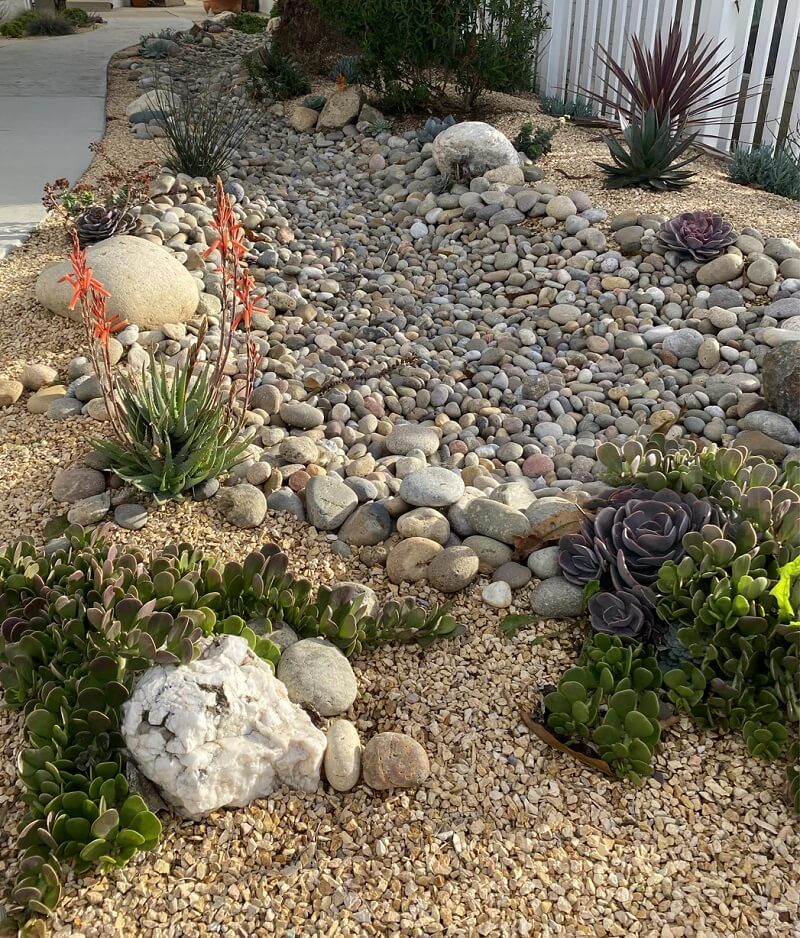If you're tired of mowing the lawn every weekend, you're not alone. More homeowners are switching from grass to rewilded yards — and one landscaper on Reddit proudly showed off their latest no-mow design.
"A year of growth," they captioned their photo. "I love killing lawns! Everything is looking so juicy this year after the swale sunk all this winter's rain and fed the plants. I made this for a client in San Clemente who was done with the lawn mowing."
Commenters were impressed.
"This looks awesome," one wrote.
"Love your yard," another enthused.

Not only are low-water plants — like the succulents featured in this garden — beautiful, but they're also more cost effective for homeowners. Currently, as much as one-third of a household's monthly water bill comes from watering lawns, according to the Environmental Protection Agency. But more and more governments are now offering rebates to homeowners who make the switch, particularly in drought-prone states like California.
"The sheer volume of resources required to keep lawns alive is staggering," reported Scientific American. "And [it] seems particularly wasteful in consideration of drought plagued places."
While many homeowners accept the green-grass lawn as traditional, fewer people realize that there's nothing natural about the trend.
"Lawns originated in Europe in the 16th century when French and English castles desired the land immediately surrounding their property to be free from trees so that soldiers could see if enemies were coming to attack," reported the Daily Californian.
Green grass lawns proliferated in the U.S. thanks to high-profile names, including George Washington and Thomas Jefferson. While a highly manicured grass lawn endures as a status symbol, it has never offered ecological benefits.
According to Audubon, "the modern obsession with highly manicured 'perfect' lawns alone has created a green, monoculture carpet across the country … [that] no longer supports functioning ecosystems."
Conversely, native plants provide critical habitats for local wildlife and pollinators.
"Removing a grass lawn is an opportunity to create a more climate-conscious yard and more functional spaces," said Allison Messner, founder of landscaping design service Yardzen, according to House Beautiful.
Whether you opt for succulents and gravel, like this landscaper, or go the natural lawn route and use moss, clover, wildflowers, or other ground cover, you'll be creating a lawn that's easier and more affordable to maintain.
Join our free newsletter for easy tips to save more, waste less, and help yourself while helping the planet.








